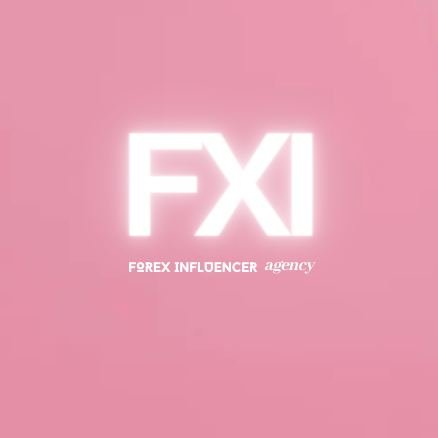Collaborating with Forex Influencers: What Brands Need to Know

In today’s digital world, influencers have become powerful marketing tools for brands across industries, and forex trading is no exception. The rise of social media has given forex influencers significant clout in shaping opinions, building trust, and educating their followers. If you’re a forex-related brand, collaborating with influencers could be a game-changer for your business—offering you a unique opportunity to expand your reach and gain credibility in the forex community. However, navigating these partnerships requires strategic planning. Here’s what brands need to know about collaborating with forex influencers.
1. Identify the Right Influencers for Your Brand
Not all influencers are created equal. Before you jump into a partnership, it’s essential to identify influencers who align with your brand values and target audience. You should assess their:
- Follower Demographics: Make sure their audience matches your target market. If you’re offering an advanced trading platform, for example, influencers with followers interested in beginner tips may not be the right fit.
- Content Style: Look for influencers whose content matches the image you want to project. Are they professional and data-driven, or more informal and engaging?
- Engagement Rates: More important than the size of their audience is how actively their followers engage. An influencer with 10,000 engaged followers can be more valuable than one with 100,000 who rarely interact.
2. Ensure Credibility and Authenticity
Forex trading involves significant financial risk, so credibility is key. Partnering with influencers who have a track record of success and provide valuable, actionable insights can significantly boost your brand’s reputation. Take time to vet potential influencers:
- Check their Trading Expertise: Look into whether they share real, accurate trading strategies or just surface-level tips. You want influencers who provide value, not just hype.
- Review Their Endorsements: Are they promoting other brands? Have they worked with reputable companies in the past? Be cautious of influencers who promote too many products or services, as it may dilute their authenticity.
3. Choose the Right Type of Collaboration
Once you’ve identified the right influencers, the next step is deciding on the type of collaboration that will provide the most value for your brand. Common collaboration formats include:
- Sponsored Posts: Influencers create content about your product or service and share it with their audience. This can be in the form of a detailed review, a simple mention, or a video demonstration.
- Affiliate Marketing: You can provide influencers with unique referral links, allowing them to earn commissions based on how many of their followers sign up or make a purchase using their link.
- Product Giveaways: Hosting a giveaway with an influencer can generate buzz and engagement. For instance, you could offer a free trading account or a discount on your trading platform.
- Guest Appearances: You can invite influencers to appear in your brand’s webinars or video tutorials, showcasing your platform’s features to a wider audience.
4. Set Clear Expectations and Goals
To maximize the success of your collaboration, it’s crucial to establish clear guidelines and objectives. This will ensure that both you and the influencer understand the scope of the partnership and what success looks like. Key areas to define include:
- Content Requirements: Be specific about the kind of content you want. This could involve talking points, product features to highlight, or creative formats (e.g., Instagram stories, blog posts, or YouTube reviews).
- Tone and Messaging: Make sure the influencer’s tone is consistent with your brand. Do you want the messaging to be educational, entertaining, or promotional?
- Deadlines: Set a timeline for when the influencer needs to create and publish the content.
- Performance Metrics: Define what success looks like. Are you looking for increased website traffic, more demo signups, or higher sales conversions? Knowing your goals will help you track the effectiveness of the partnership.
5. Compliance and Regulations
Forex trading is heavily regulated in many countries, and promoting forex-related products and services may come with legal implications. Ensure that both you and the influencer comply with relevant advertising guidelines, such as:
- Disclosure: Influencers must disclose paid partnerships to avoid misleading their followers. This typically involves hashtags like #ad or #sponsored.
- Regulatory Compliance: Ensure that any financial claims made by the influencer are accurate and adhere to local financial regulations, particularly around risk disclosures.
6. Track and Analyze Performance
After launching your influencer collaboration, it’s important to monitor the results. This will allow you to assess whether the partnership is delivering on your goals and identify areas for improvement. Key metrics to track include:
- Engagement Rates: Likes, comments, and shares on the influencer’s posts.
- Referral Traffic: Use tools like Google Analytics to see how much traffic is being driven to your site from the influencer’s content.
- Conversions: Track how many leads, sign-ups, or purchases resulted from the influencer’s referral link or promo code.
- Brand Awareness: Monitor mentions of your brand across social platforms to gauge how the influencer’s promotion has affected your visibility.
Conclusion
Collaborating with forex influencers can be a highly effective strategy to boost your brand’s presence, credibility, and reach in the forex trading industry. However, success hinges on finding the right influencer, setting clear expectations, and ensuring regulatory compliance. With the right approach, influencer marketing can not only increase your brand’s visibility but also foster trust and long-term loyalty among traders.
By taking these steps, your brand can tap into the power of forex influencers to grow your business and build stronger connections with your target audience.
